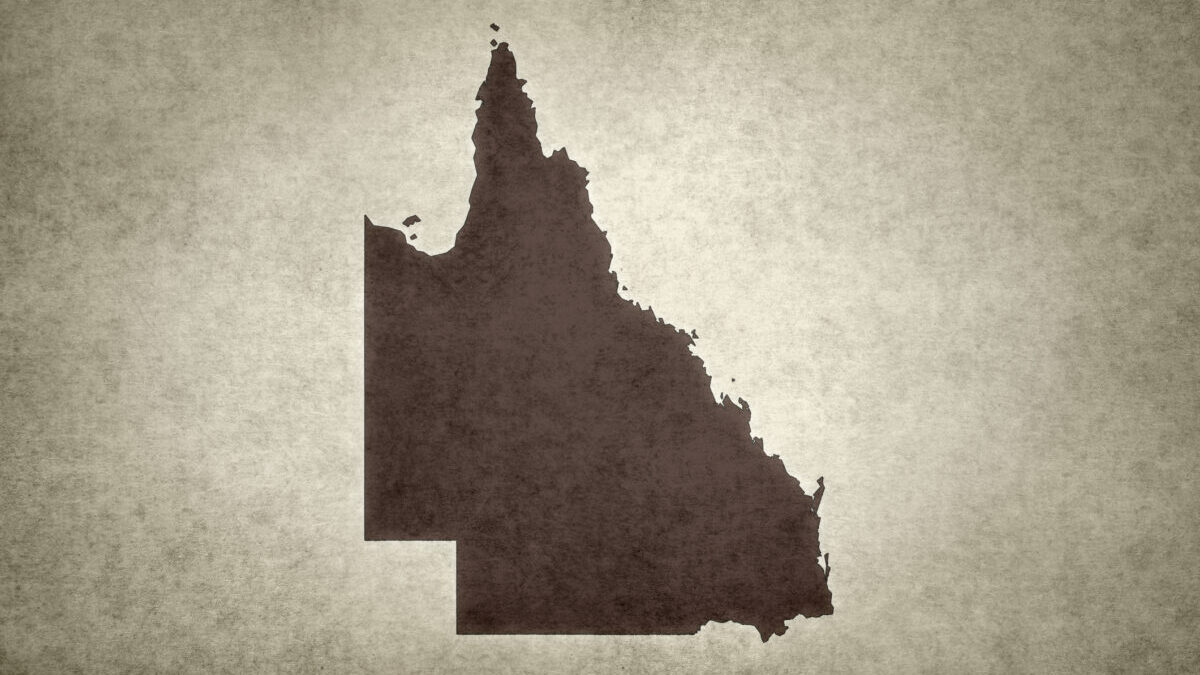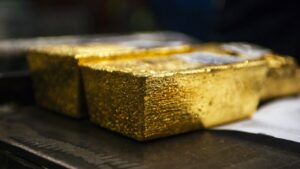These explorers think the Sunshine State can recapture its golden past

Pic: Gwengoat/iStock via Getty Images
Queensland was once one of Australia’s true golden gooses.
Known for its copper riches and bounty of steelmaking coal, which after a major royalty hike last year is making the State Government billions, Queensland is by no means resource poor.
But its rich legacy of gold production has been overshadowed as investment has flowed to other jurisdictions and commodities.
By FY21, Queensland, which in the 1980s and early 1990s hosted some of Australia’s largest and cheapest gold operations, produced just 4.1% or 13t of our precious metal bounty.
By contrast WA delivered 68% or 218t, followed by New South Wales (11%), Victoria (7.6%) and the NT (4.7%), just South Australia (3.8%), Tasmania (0.7%) and the ACT (nada) trailed it.
A new wave of explorers are now looking to change that, viewing the absence of follow up work in North Queensland’s historic gold fields as an opportunity.
“Basically, in the ’90s … we had a lot of very vibrant exploration and mining going on in the basin,” said Ballymore Resources (ASX:BMR) technical director David A-Izzedin, who explored what is now Queensland’s largest gold mine Ravenswood for Mt Isa Mines in the ’90s.
“People seem to forget that back in the ’90s, Kidston and Mt Leyshon were battling it out to be the biggest gold mine in the country, we had the lowest cost gold mine in the country at Tick Hill, which was an MIM discovery.
“After it closed up, Yandan became the lowest cost gold mine in the Drummond Nasin.
“In Western Australia in the ’80s and ’90s people were focused on oxide shallow gold, and they then continued to drill underneath these things into bigger targets.
“Queensland really lost interest with the big boys and while the big boys left, it really just never had anywhere near the amount of work done that Western Australia has.”
An accident of history
Ballymore non-exec chairman Andrew Greville, another former MIM and X-Strata executive, says the discovery in 1981 of BHP’s (ASX:BHP) Escondida, still the world’s largest copper mine, had a butterfly effect that helped drain gold investment out of Queensland.
Many of the miners operating in the state, largely copper focused, went out in search of massive porphyry style deposits overseas.
“During the ’90s when BHP became the owner of Escondida, and it was apparent that Escondida was going to provide a quantum leap in the valuation of BHP it was coincident with the opening of Latin America following the Pinochet period of instability and nationalisation opening of Chile in particular, but also Argentina at that time,” he said.
“And so the Australian companies rushed out to look for elephants and they went predominantly to Latin America, but also into Africa, BHP did a lot of work at that time through Russia, and through Pakistan and the Reko Diq discovery and Udokan discovery came out of that same shift in the consciousness from the top tier of Australian mining companies at that stage.
“There was an opportunity for them to become global scale, but they needed to get offshore and find the elephants.”
What was left behind was a bevy of attractive gold targets with histories that would have seen them receive 10s of 1000s of metres of drilling if they were in WA.
“One thing that just continues to amaze me is, most things in Western Australia if there’s a geochem anomaly or magnetic anomaly they will have already had quite a few holes put into them,” A-Izzedin said.
“In Queensland, we tend to be less enthused about drilling it seems for whatever reason, and we basically haven’t done anywhere near the drilling.
“A good case in point is our Ruddygore Project is a copper project up at Chillagoe.
“It’s a historic mine, a high-grade copper mine that has had in its history 26 holes drilled for 1200m, and that’s over an area of over three kilometres by two kilometres.
“Most of it has not even a hole into it and it’s just an area that is crying out for further work.”
Bonanza grades
Ballymore’s big focus currently is the historic Dittmer mine, which produced 54,000oz at stunning grades between 1934 and 1951, with old workings that have reopened by BMR making it a prime candidate for early development.
Located around 80km from the 1.1Moz Mount Carlton mine in Central Queensland’s Normanby Goldfield, as many as 10 old mines sit on the Dittmer tenement package.
At MIM, A-Izzedin was a central figure in the discovery of 3Moz of gold at Ravenswood in three years. He thinks a repeat of that success could well be possible.
“Things like our Dittmar project are great examples of places that have had even less work than Ravenswood,” he said.
“Since back in the ’90s it’s hardly had a rock chip or a soil sample collected over it.
“And we’re now going through trying to systematically explore that with the hope that we will find bigger targets that are associated with those narrow veins that were mined by the old timers in the late 1800s, early 1900s.”
The project area is so underdocumented that, Greville notes, Ballymore has found shafts that never appeared on any map.
“The numbers that they produced, they mined at 355g/t from Scorpion, 567g/t from Loch Neigh and 278g/t from Golden Gem and 151g/t from Dittmer, which is the mine that we’re reopening,” he said.
“So they’re enormously high grade, small shows that are scattered in what we hope is a pattern across our Dittmer tenement.
“And our job at the moment is to reopen Dittmer to start producing some cash and then continue to invest in the story there that says there’s going to be a source or a connection for all of these ridiculously high grade opportunities.”
Heading north
At around $15 million Ballymore is well and truly at the speculative end of the sector, though it enjoyed an unexplained 14% bump on Friday.
With a similar market cap at $18m, fellow Queensland gold enthusiast Pacgold (ASX:PGO) is looking to make a greenfields discovery in Queensland’s far north at its Alice River gold project.
“North Queensland has had a fantastic history of a number of large open pit and underground high grade mines,” Pacgold MD Tony Schreck said.
“About 40 million ounces of gold has come out of North Queensland. A lot of that exploration is focused in and around the existing mines.
“But the success that we’re having at PacGold has been sort of stepping out along that trend and looking at historical gold fields that have been completely overlooked by modern exploration.
“We’ve had success coming in with modern geophysics and applying it on an historical gold field for the very first time and that’s what’s really driven the high grade discovery that we’ve made now in our first drill program.”
Schreck said early drilling success at Alice River was showing the value of bringing modern exploration techniques to ground that had been overlooked for more than two decades.
“We’re at the top of an intrusion related gold system. And as we go deeper, we’re coming into the tops of these high grade zones,” he said.
“Some of the intersections we’ve made include 17m at 9.3 grams gold and we’re seeing some incredible continuity of the high grade as we follow these zones to depth.
“But particularly along strike now, because the geophysics lights up a target that extends well over 9km, we’ve only really just focused on one of our targets.
“And now we’re spreading our wings using the geophysics and we’re having some incredible success along strike now as well.”
Other Queensland gold plays include Evolution Mining (ASX:EVN) at its Ernest Henry copper-gold mine and Mt Rawdon gold project, while a trio of mines divested by the Aussie large cap over recent years, the Chinese-owned Pajingo, Navarre Minerals’ (ASX:NML) Mt Carlton and Aeris Resources’ (ASX:AIS) Cracow are also in production, as well as EMR Capital’s Ravenswood mine, formerly owned by African miner Resolute (ASX:RSG).
Explorers focused primarily on gold in Queensland include QX Resources (ASX:QXR), Many Peaks Gold (ASX:MPG) and Savannah Goldfields (ASX:SVG), the latter of which owns the 471,000oz Agate Creek gold mine and Georgetown processing plant near Townsville.
Queensland gold stocks share prices today:
Related Topics

UNLOCK INSIGHTS
Discover the untold stories of emerging ASX stocks.
Daily news and expert analysis, it's free to subscribe.
By proceeding, you confirm you understand that we handle personal information in accordance with our Privacy Policy.








